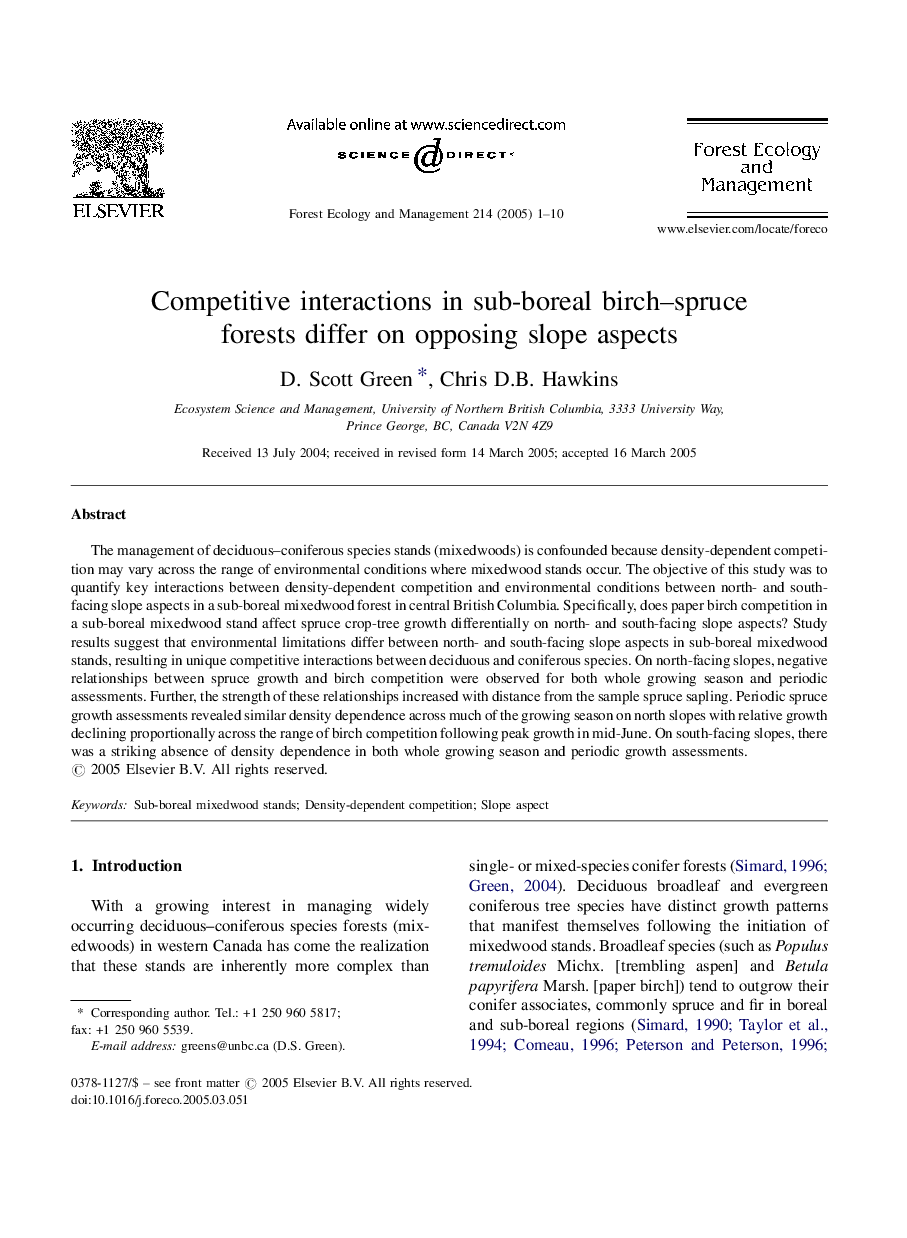| Article ID | Journal | Published Year | Pages | File Type |
|---|---|---|---|---|
| 9620225 | Forest Ecology and Management | 2005 | 10 Pages |
Abstract
The management of deciduous-coniferous species stands (mixedwoods) is confounded because density-dependent competition may vary across the range of environmental conditions where mixedwood stands occur. The objective of this study was to quantify key interactions between density-dependent competition and environmental conditions between north- and south-facing slope aspects in a sub-boreal mixedwood forest in central British Columbia. Specifically, does paper birch competition in a sub-boreal mixedwood stand affect spruce crop-tree growth differentially on north- and south-facing slope aspects? Study results suggest that environmental limitations differ between north- and south-facing slope aspects in sub-boreal mixedwood stands, resulting in unique competitive interactions between deciduous and coniferous species. On north-facing slopes, negative relationships between spruce growth and birch competition were observed for both whole growing season and periodic assessments. Further, the strength of these relationships increased with distance from the sample spruce sapling. Periodic spruce growth assessments revealed similar density dependence across much of the growing season on north slopes with relative growth declining proportionally across the range of birch competition following peak growth in mid-June. On south-facing slopes, there was a striking absence of density dependence in both whole growing season and periodic growth assessments.
Keywords
Related Topics
Life Sciences
Agricultural and Biological Sciences
Ecology, Evolution, Behavior and Systematics
Authors
D. Scott Green, Chris D.B. Hawkins,
